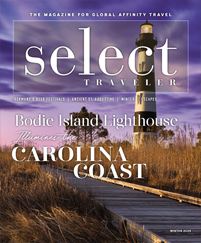Manassas National Battlefield
Manassas, Virginia
As the site of two major Civil War battles outside the pivotal point of power, Washington, D.C., the Manassas National Battlefield is one of the most significant Civil War sites. The First Battle of Bull Run, called First Manassas by the Confederate army, in 1861 was the first major battle of the war. In it, inexperienced soldiers found what they were up against, and generals began to prove themselves. In the Second Battle of Bull Run in 1862, more than 100,000 battle-tested soldiers were brought together as Gen. Robert E. Lee drove his army on an offensive to the Union capital.
Spread over more than 5,000 acres, the battlefield offers groups multiple points of entry, depending on interest, but Ray Brown, chief of interpretation and cultural resources management for the park, recommends groups begin at Henry Hill, the height of fighting during the first battle.
After the park’s 45-minute film “Manassas: End of Innocence” in the main visitor center, groups can explore the interactive on-site museum where, in addition to a display of uniforms and weapons, a six-minute light display features troop movements on a map of the grounds. Groups can then join a ranger-led tour that focuses on either the first or the second battle.
“We can accommodate as many as 80 to 100 at a time,” said Brown. “There are no reservations except for special events we have speakers for.”
The National Battlefield also offers a 20-mile, self-guided driving tour, but not all of the route is accessible by motorcoach.
Vicksburg National Military Park
Vicksburg, Mississippi
By the time the Union army reached Vicksburg, Mississippi, in 1863, the Union had made its way down the Mississippi River into the heart of Confederate territory, and the hilltop outpost offered the Confederates a chance for a last stand. And stand they did, for 47 days, ending on July 4, Independence Day.
Bill Justice, park superintendent, recommends that groups begin in the visitor center at the southern edge of the park loop for a 15-minute film before setting off to see the city and the surrounding battlefield.
“A licensed battlefield guide goes with the tour on the bus doing a two-hour road tour, starting on the siege lines around the park, through the National Cemetery and the USS Cairo Gunboat and Museum and then back on the Confederate side,” he said.
Unlike your typical battlefield driving tour, guides on the Vicksburg loop interpret the largest collection of outdoor art in the country, more than 1,300 memorials, including bronze and stone regimental markers and busts of senior officers. “There was a big push after the park was created in the 1890s and 1900s, and many of the Union memorials date to then,” said Justice.
Veterans Day and Memorial Day feature major living-history programs in Vicksburg.
“We have an interpretive program that talks about the history of American soldiers,” said Justice. “People dress in soldiers’ uniforms and talk about life on the Confederate and Union lines and that it was very different. One year, a guy put together an entire 60-pound kit of all the things a soldier would have on him.”
In addition to regular ranger programs, which were being finalized for the year at the time of printing, the park has a number of special events for the National Park Service centennial this year.
Andersonville National Historic Site
Andersonville, Georgia
During the four years the Civil War raged through America, nearly 13,000 Union prisoners perished in the Confederate prisoner camp at Camp Sumter, now know as the Andersonville National Historic Site, taking its name from the Andersonville Prison. As the prison was filled to nearly four times its capacity, many fell to diseases related to rationing and overcrowding.
Today, the Andersonville National Historic Site consists of three main components: the historic Civil War site; the National Cemetery, which holds the remains of the soldiers from the prisoner-of-war camp and is still an active veterans cemetery today; and the National Prisoner of War Museum.
“All three are different in tone and have a bit of a different story,” said Jody Mays, chief of interpretation and resources management for the park. “We’re set up as the only National Park Service site to interpret the war stories of all POWs from the Civil War to today. You get captured and journey through the prison camp, it talks about what the families go through, and then at the end, you are released.”
The historic prison site can be visited on a self-guided or a guided tour, as the park offers groups a narrative CD that can be played from the bus, but there are also rangers available to walk people through the prison for a 45-minute tour.
In mid-March each year, Andersonville hosts a living-history weekend. “Re-enactors play soldiers, the priests who came to visit them, and the cannon crew,” said Mays. “One does a doctor and has a tent set up.”









